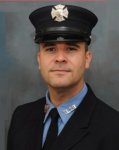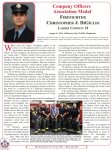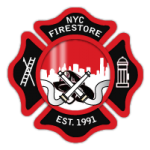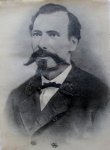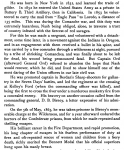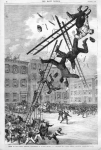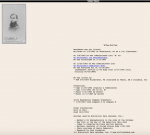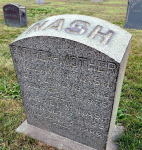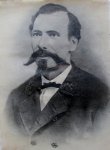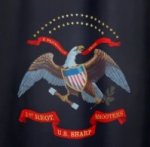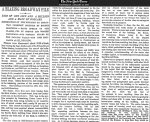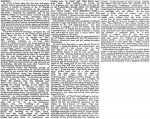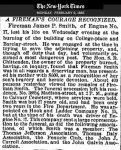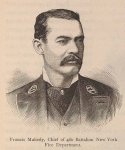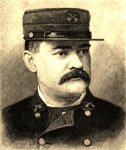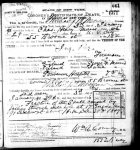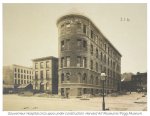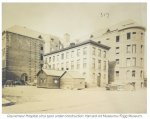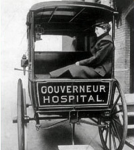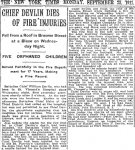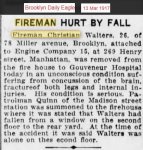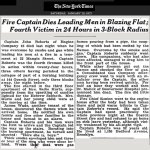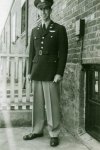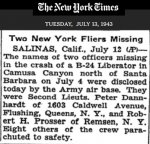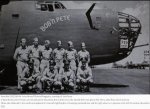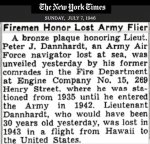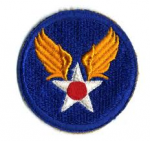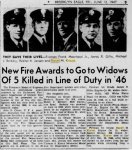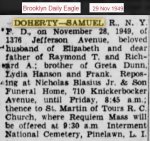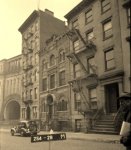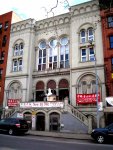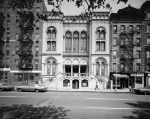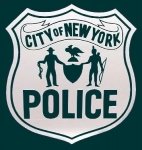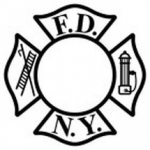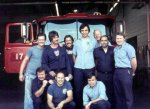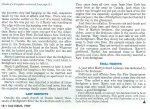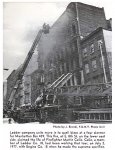ENGINE 15/LADDER 18/BATTALION 4 (ENGINE 17 DISBANDED) FIREHOUSE 25 PITT STREET LOWER EAST SIDE, MANHATTAN DIVISION 1, BATTALION 4 "FORT PITT"
LADDER 18 MEDAL
CHARLES C. MALONEY FF. LAD. 18 MAR. 22, 2008 2009 COLUMBIA ASSOCIATION
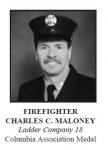
FIREFIGHTER CHARLES C. MALONEY LADDER COMPANY 18
Appointed to the FDNY on October 14, 1978. Previously assigned to Engine 17. Member of the Emerald and Holy Name Societies. Cited for bravery on five previous occasions, including the Thomas F. Dougherty Medal in 1999. Also the recipient of the New York City Fire Museum Board of Trustees Award, an award from Firehouse Magazine for Heroism and Community Service and the 2009 Liberty Mutual Firemark Award. Holds an AA degree in Liberal Arts from the College of Staten Island. Resides on Staten Island with his wife, Maureen.
March 22, 2008, 1600 hours, Box 75-440, 1023 FDR Drive, Manhattan
The 9x6 tour of March 22, 2008, started like many others for the members of Ladder 18. It was a quiet, sunny Saturday on the lower east side. That changed at 1555 hours when Ladder 18 was dispatched to Manhattan Box 440, reporting a structural fire at the address of 1223 FDR Drive. Second-source information determined that the fire location actually was 1023 FDR Drive and Ladder 18 proceeded to the address. The fire location was in a cluster of low-rise housing projects known as Jacob Riis Houses.
Lieutenant John Heaney ordered FF Ronald Lattari, Ladder 18’s chauffeur, to approach the building via the courtyard off Avenue D. Turning into the courtyard, heavy gray/black smoke could be seen from a third-floor window. As Ladder 18 reached its position, arms were seen waving frantically through the child gate. The Lieutenant transmitted the 10-75, ordered the tower ladder into position and entered the building with his forcible entry team.
FF Charles Maloney, Ladder 18’s outside vent Firefighter, took his position in the tower ladder bucket and raised it to the third-floor window. The woman, Carmen Henry, in her panicked state, had become entangled in the window gate, preventing FF Maloney from removing the gate. Twice during this incident, the woman lost consciousness. This added to the difficulty of the rescue because she was unable to assist her rescuer. Sensing the urgency of the situation, he removed the window glass to relieve the smoke condition in the apartment.
With one foot in the bucket and the other on the windowsill, FF Maloney cleared the woman from the gate and lifted her over the unusually high windowsill and into Ladder 18’s bucket. Checking on her condition once she was in the bucket, the woman, a home health aide, communicated to FF Maloney that the person in her care was still in the apartment.
FF Maloney transmitted the report of another victim in the apartment via handie-talkie and prepared to re-enter the apartment. With severe pain in his neck and back caused by muscle spasms from lifting the large woman into the bucket, the Firefighter removed the window gate, cleared the remaining window sashes and re-entered the apartment.
As he conducted the search for the second victim, the rescuer faced intense heat and blinding smoke from the fire, which had burned through the bedroom door. Still searching without a hose-line in place, FF Maloney also knew that when Engine 28 members started operating, they would be pushing the smoke, fire and heat in his direction.
FF Maloney was able to locate the second victim, Adeline Lunnon, in her hospital bed. With the assistance of FF Stephen Katz--the Rescue Battalion Aide who had entered the apartment from the third-floor window--the pair carried the woman to the window. FF Katz passed the woman to FF Maloney and into the safety of Ladder 18’s bucket.
In spite of injuries sustained while completing the first rescue, FF Charles Maloney re-entered the fire apartment and effected a second rescue. His initiative and capability were on display and he is recognized today with the Columbia Association Medal.
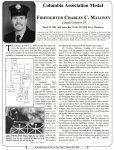
LADDER 18 MEDAL
CHARLES C. MALONEY FF. LAD. 18 MAR. 22, 2008 2009 COLUMBIA ASSOCIATION

FIREFIGHTER CHARLES C. MALONEY LADDER COMPANY 18
Appointed to the FDNY on October 14, 1978. Previously assigned to Engine 17. Member of the Emerald and Holy Name Societies. Cited for bravery on five previous occasions, including the Thomas F. Dougherty Medal in 1999. Also the recipient of the New York City Fire Museum Board of Trustees Award, an award from Firehouse Magazine for Heroism and Community Service and the 2009 Liberty Mutual Firemark Award. Holds an AA degree in Liberal Arts from the College of Staten Island. Resides on Staten Island with his wife, Maureen.
March 22, 2008, 1600 hours, Box 75-440, 1023 FDR Drive, Manhattan
The 9x6 tour of March 22, 2008, started like many others for the members of Ladder 18. It was a quiet, sunny Saturday on the lower east side. That changed at 1555 hours when Ladder 18 was dispatched to Manhattan Box 440, reporting a structural fire at the address of 1223 FDR Drive. Second-source information determined that the fire location actually was 1023 FDR Drive and Ladder 18 proceeded to the address. The fire location was in a cluster of low-rise housing projects known as Jacob Riis Houses.
Lieutenant John Heaney ordered FF Ronald Lattari, Ladder 18’s chauffeur, to approach the building via the courtyard off Avenue D. Turning into the courtyard, heavy gray/black smoke could be seen from a third-floor window. As Ladder 18 reached its position, arms were seen waving frantically through the child gate. The Lieutenant transmitted the 10-75, ordered the tower ladder into position and entered the building with his forcible entry team.
FF Charles Maloney, Ladder 18’s outside vent Firefighter, took his position in the tower ladder bucket and raised it to the third-floor window. The woman, Carmen Henry, in her panicked state, had become entangled in the window gate, preventing FF Maloney from removing the gate. Twice during this incident, the woman lost consciousness. This added to the difficulty of the rescue because she was unable to assist her rescuer. Sensing the urgency of the situation, he removed the window glass to relieve the smoke condition in the apartment.
With one foot in the bucket and the other on the windowsill, FF Maloney cleared the woman from the gate and lifted her over the unusually high windowsill and into Ladder 18’s bucket. Checking on her condition once she was in the bucket, the woman, a home health aide, communicated to FF Maloney that the person in her care was still in the apartment.
FF Maloney transmitted the report of another victim in the apartment via handie-talkie and prepared to re-enter the apartment. With severe pain in his neck and back caused by muscle spasms from lifting the large woman into the bucket, the Firefighter removed the window gate, cleared the remaining window sashes and re-entered the apartment.
As he conducted the search for the second victim, the rescuer faced intense heat and blinding smoke from the fire, which had burned through the bedroom door. Still searching without a hose-line in place, FF Maloney also knew that when Engine 28 members started operating, they would be pushing the smoke, fire and heat in his direction.
FF Maloney was able to locate the second victim, Adeline Lunnon, in her hospital bed. With the assistance of FF Stephen Katz--the Rescue Battalion Aide who had entered the apartment from the third-floor window--the pair carried the woman to the window. FF Katz passed the woman to FF Maloney and into the safety of Ladder 18’s bucket.
In spite of injuries sustained while completing the first rescue, FF Charles Maloney re-entered the fire apartment and effected a second rescue. His initiative and capability were on display and he is recognized today with the Columbia Association Medal.


